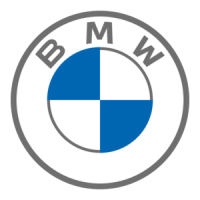Adjusting
42
Adjusting
Correct seated position
A seated position that suitably reflects your
requirements is a vital condition of relaxed,
fatigue-free driving. In conjunction with the
seat belts and the airbags, the correct
seated position enhances the passive
safety of the car's occupants in the event of
an accident. You should therefore observe
the following notes in order to maintain the
protective function of the car's safety
systems.
For additional notes on carrying children in
safety, see page 53.
Correct seating in cars with airbags
Keep your distance from the airbags.
Always grip the steering wheel on the
rim, to minimise the risk of injury to the
hands or arms in the event of the airbag
being triggered off.
No other persons, pets or objects should
be held or permitted to remain between the
airbag and yourself.
Do not use the front airbag cover on the
front passenger's side as a tray, nor rest
your feet or legs on it.
<
The locations of the airbags and additional
notes are given on page 52.
Correct seated position with seat
belt
Never restrain more than one person
with each seat belt. Babies or small
children must not travel on the lap of
another occupant.
The belts should not be twisted and must
be positioned firmly over the pelvis and
shoulder, as close to the body as possible.
They should not pass over hard or fragile
objects in your pockets.
The seat belt must not pass across the
neck, become trapped at any point or chafe
against any sharp edges.
Avoid bulky clothing and remember to
tauten the lap belt frequently by pulling the
shoulder belt. In the event of a head-on
collision, the lap belt could otherwise slide
over the hips and injure the lower part of
the body. In addition, the restraining effect
is reduced if the seat belt is slack against
the wearer'sbody. Pregnant women should
also wear the seat belt, making sure that
the lap strap is well down on the hips and
does not press on the abdominal region of
the body.
<
Fastening seat belts, see page 46.
Seats
Before adjusting, note:
Do not reposition the driver's seat
while the car is in motion. The seat
could move unexpectedly, leading to the
driver losing control of the car, so that an
accident could be caused.
Do not recline the seat back too far while
the car is being driven (this applies in
particular to the front passenger and the
electric rear seats), or there will be a risk of
submarining under the seat belt, so that the
belt loses its full protective effect.
<
Observe also the notes on seat belts on
page 46 and on the active front head
restraint on page 45.
The principle
The seats are adjusted in two stages:
ba.book Page 42 Thursday, December 19, 2002 8:13 PM

